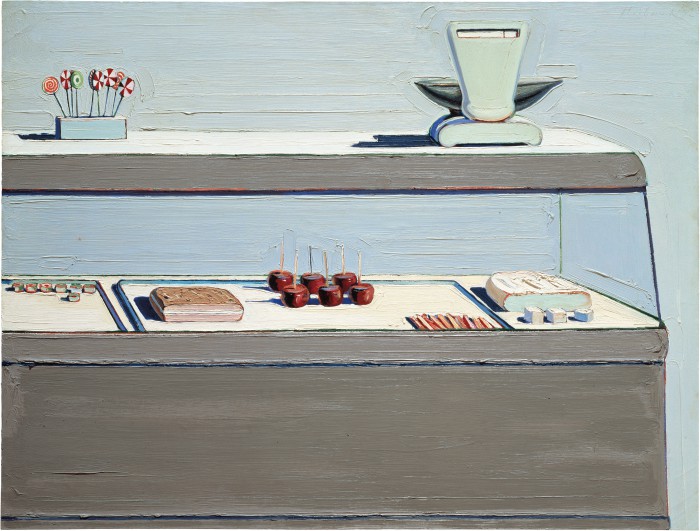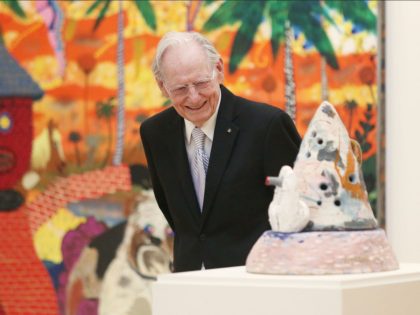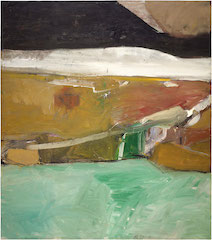Wayne Thiebaud
Candy Counter 1962

Art © Wayne Thiebaud/Licensed by VAGA, New York, NY. Reproduction of this image, including downloading, is prohibited.
Wayne Thiebaud is well known for his images of food, ranging from lollipops to display cakes. During the early 1960s, he was identified with Pop Art—a connection he was quick to disclaim. Yet his own background in commercial art affect the way he handled subject matter. In Candy Counter, he heightens the intensity of the color so that orange and green candies seem to vibrate with an improbable brightness, suggesting the chromatic enhancement common in advertising art. The bands of complimentary colors edging the class and candy create a flicker reminiscent of the fluorescent light in a cafeteria or candy store. Through his brushwork, Thiebaud conveys the tactile duality of his subject. He virtually frosts the surface of the canvas with paint to suggest the rippling of fudge or the shiny stickiness of caramel. Isolated in a cold, ambiguous environment, the various sweets become a means for formal exploration and finally works of art in themselves, displayed in a glass case.
Paintings crack. California artist Wayne Thiebaud’s Candy Counter is no exception. Cracks are the inevitable material traces of time’s passing, Nostalgia infuses the work, which recalls displays of sweets the artist encountered in his youth. Candy Counter is one of many Thiebaud paintings that portray everyday objects: cakes, gumball machines, toys, and so on. They might bring to mind pictures by contemporary Pop artists, but unlike Andy Warhol’s soda bottles or Roy Lichtenstein’s comics, Thiebaud’s still lifes admire their subjects’ vitality. Nothing in Candy Counter is flat or breathless. A brightly illuminated scale atop the counter radiates warmth and casts a shadow blue and deep. Thin-necked lollipops playfully mock their upturned and glistening candy-apple counterparts below. Thick paint models the outlines of the weighing device and many other objects, emphasizing the painting’s own material presence. In such a pleasant picture, cracks abruptly assert the artwork’s age. Yet, however subtle, they make Candy Counter sweeter. Against time, memory and material continue to hold.
-Joseph Harold Larnerd, PhD ’18






